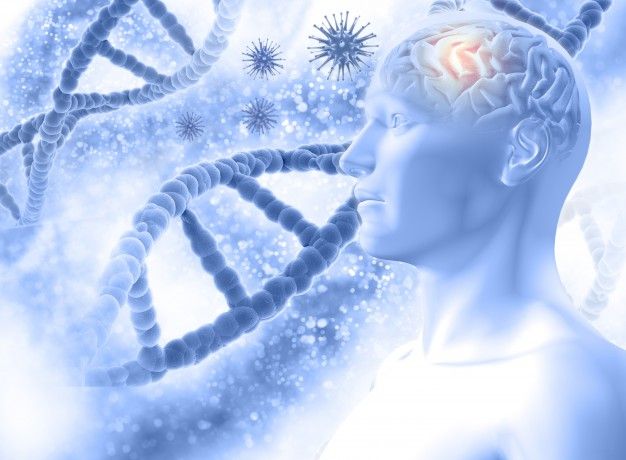Your Clap has been added.
Thanks for your consideration
Share
Share Link has been copied to the clipboard.
Here is the link https://www.maxhealthcare.in/blogs/epilepsy-&-seizure
Seizure/epilepsy is a paroxysmal event due to abnormal excessive or synchronous neuronal activity in the brain. Epilepsy describes a condition in which a person has recurrent seizures due to a chronic, underlying process.
In general, 5–10% of the population will have at least one seizure, with the highest incidence occurring in early childhood and late adulthood. Using the definition of epilepsy as two or more unprovoked seizures, the incidence of epilepsy is 0.3–0.5% and the prevalence is around 5–10 persons per 1000.
Seizures may be either focal or generalized.
Focal Seizures
Focal seizures arise from a neuronal network either discretely localized within one cerebral hemisphere or more broadly distributed but still within the hemisphere. With the new classification system, the subcategories of "simple focal seizures" and "complex focal seizures" have been eliminated.
Generalized Seizures
Generalized seizures are thought to arise at some point in the brain but immediately and rapidly engage neuronal networks in both cerebral hemispheres. Several types of generalized seizures have features that place them in distinctive categories and facilitate clinical diagnosis
Basic Mechanisms
Mechanisms of Seizure Initiation and Propagation
Focal seizure activity starts in a very discrete region and then spread to neighboring regions and the process may be defined as seizure initiation phase and propagation phase.
The initiation phase is characterized by two concurrent events in an aggregate of neurons: (1) high-frequency bursts of action potentials and (2) hypersynchronization. The bursting activity is caused by a relatively long-lasting depolarization of the neuronal membrane due to influx of extracellular calcium (Ca2+), which leads to the opening of voltage-dependent sodium (Na+) channels, influx of Na+, and generation of repetitive action potentials. This is followed by a hyperpolarizing afterpotential mediated by GABA receptors or potassium (K+) channels, depending on the cell type. The synchronized bursts from a sufficient number of neurons result in a so-called spike discharge on the EEG.
Mechanisms of Epileptogenesis
Epileptogenesis refers to the transformation of a normal neuronal network into one that is chronically hyperexcitable. There is often a delay of months to years
Causes of Seizures and Epilepsy
According to Age—
Childhood (0-8 years)– febrile seizure, perinatal insult, biochemical imbalance eg hypoglycaemia, hyponatremia, hypocalcemia or genetic factors or structural defect in Brain
8-18 years of age- head injury, genetic causes, infections, calcifications
18-45 years of age- Neurocysticercosis, Brain infections, head injury, stroke
45-70 years of age- head injury, infections, hyponatremia, hypoglycaemia, stroke
>70 years of age- any biochemical imbalance in body, drug induced
Evaluation
Clinical assessment – history and examination helps in identifying syncope, pseudo seizure, chemical imbalance, psychogenic causes
Radiological assessment- need CT head and MRI brain
Electrophysiological assessment – EEG
Treatment
- Mechanisms of Action of Antiepileptic Drugs
- Antiepileptic drugs appear to act primarily by blocking the initiation or spread of seizures.
- Inhibition of Na+-dependent action potentials in a frequency-dependent manner (e.g., phenytoin, carbamazepine, lamotrigine, topiramate, zonisamide, lacosamide, rufinamide)
- Inhibition of voltage-gated Ca2+ channels (phenytoin, gabapentin, pregabalin)
- Attenuation of glutamate activity (lamotrigine, topiramate, felbamate)
- Potentiation of GABA receptor function (benzodiazepines and barbiturates)
- Increase in the availability of GABA (valproic acid, gabapentin, tiagabine)
- Modulation of release of synaptic vesicles (levetiracetam).
- The two most effective drugs for absence seizures, ethosuximide and valproic acid, probably act by inhibiting T-type Ca2+ channels in thalamic neurons.
Treatment: Seizure
When a patient presents shortly after a seizure, the first priorities are attention to vital signs, respiratory and cardiovascular support, and treatment of seizures Life-threatening conditions such as CNS infection, metabolic derangement, or drug toxicity must be recognized and managed appropriately.
When the patient is not acutely ill, the evaluation will initially focus on whether there is a history of earlier seizures. If this is the first seizure, then the emphasis will be to: (1) establish whether the reported episode was a seizure rather than another paroxysmal event, (2) determine the cause of the seizure by identifying risk factors and precipitating events, and (3) decide whether anticonvulsant therapy is required in addition to treatment for any underlying illness.

Written and Verified by:

Related Blogs

Prof. (Dr). V.K.Jain In Neurosciences , Spine Surgery
Nov 07 , 2020 | 5 min read

Dr. Sitla Prasad Pathak In Neurosurgery , Neurosciences , Interventional Neurology
Nov 08 , 2020 | 2 min read

Medical Expert Team
Nov 08 , 2020 | 1 min read
Blogs by Doctor

7 Wonderful Exercises for Those Suffering From Epilepsy
Dr. Mukesh Kumar In Neurosciences
Feb 12 , 2018 | 2 min read

Everything You Need To Know About Dementia
Dr. Mukesh Kumar In Neurosciences
Sep 24 , 2021 | 4 min read
Most read Blogs
Get a Call Back
Related Blogs

Prof. (Dr). V.K.Jain In Neurosciences , Spine Surgery
Nov 07 , 2020 | 5 min read

Dr. Sitla Prasad Pathak In Neurosurgery , Neurosciences , Interventional Neurology
Nov 08 , 2020 | 2 min read

Medical Expert Team
Nov 08 , 2020 | 1 min read
Blogs by Doctor

7 Wonderful Exercises for Those Suffering From Epilepsy
Dr. Mukesh Kumar In Neurosciences
Feb 12 , 2018 | 2 min read

Everything You Need To Know About Dementia
Dr. Mukesh Kumar In Neurosciences
Sep 24 , 2021 | 4 min read
Most read Blogs
- CAR T-Cell Therapy
- Chemotherapy
- LVAD
- Robotic Heart Surgery
- Kidney Transplant
- The Da Vinci Xi Robotic System
- Lung Transplant
- Bone Marrow Transplant (BMT)
- HIPEC
- Valvular Heart Surgery
- Coronary Artery Bypass Grafting (CABG)
- Knee Replacement Surgery
- ECMO
- Bariatric Surgery
- Biopsies / FNAC And Catheter Drainages
- Cochlear Implant
- More...



